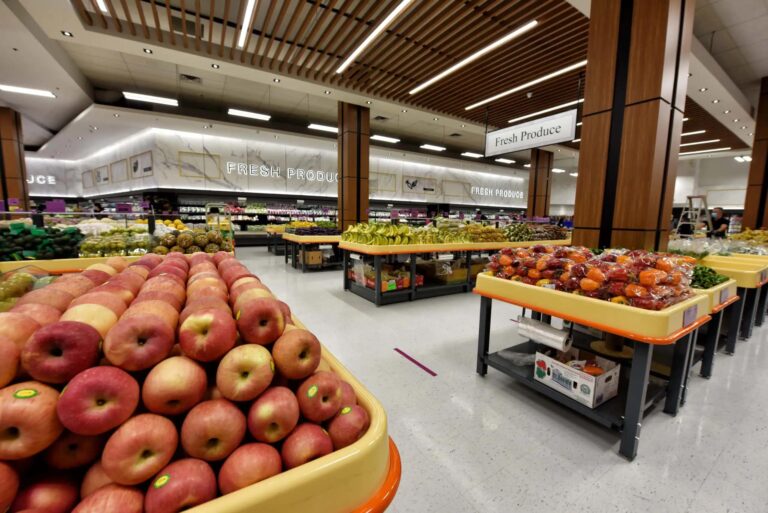6 Ways to Reduce Waste in Your Restaurant and Save Money
It’s no secret that the restaurant industry generates a lot of waste. In fact, according to the EPA, restaurants generate about 8,000 tons of garbage every day. That’s a lot of waste! Not to mention, all that waste costs money. The good news is that there are ways to reduce waste in your restaurant and save money. Here are some tips:
Educate your staff on the importance of waste reduction
As a restaurant owner, you know that food waste is a big problem. Not only does it impact your bottom line, but it also hurts the environment. Food entrepreneurs from Arthur Street Café note that it’s crucial to educate your staff on ways to reduce waste in your restaurant.
One way to reduce waste is to make sure that food is properly portioned. This means using the right size plates and bowls for each dish and making sure that each guest gets the appropriate amount of food.
Another way to reduce waste is to make sure that food is cooked properly. This means ensuring that meats are cooked through and vegetables are properly steamed or sauteed.
Finally, it’s important to make sure that leftovers are properly stored and used. This means labeling leftovers with the date and time so that they can be used within a reasonable timeframe.
By educating your staff on ways to reduce waste, you can save money and help the environment at the same time.
Implement a recycling program
One way to reduce food waste is to implement a recycling program. This can be as simple as setting up a separate bin for compostable materials like food scraps and paper napkins. You can then use this compost to fertilize your garden or landscaping. Not only will this reduce waste, but it will also save you money on fertilizer costs.
Another way to reduce food waste is to donate unused foods to local soup kitchens or food banks. This not only helps those in need, but it also reduces the amount of waste that your restaurant produces. Finally, you can reduce food waste by offering smaller portion sizes or giving customers the option to take home leftovers.
By taking these simple steps, you can make a big difference in reducing food waste in your restaurant.
Train your staff to properly package food so that less is wasted
One way to reduce food waste is to train your staff on proper packaging techniques. Make sure they know how to properly seal and store food so that it stays fresh for longer. You can also save money by investing in matching storage containers and labels. This will help your staff to better organize and keep track of food items so that they can be used before they go bad.
Purchase eco-friendly products whenever possible
And one of the best ways to reduce waste is to purchase eco-friendly products. Here are just a few of the many benefits of going green:
Eco-friendly products are often made from recycled materials, which means they require less energy and resources to produce. This can save you money on your production costs and help to reduce your carbon footprint.
In addition, green products often come with a smaller price tag than their conventional counterparts. This is because eco-friendly manufacturers are able to take advantage of government incentives and tax breaks. So not only will you save money on production costs, but you’ll also save on your taxes!
So next time you’re looking for ways to cut costs at your restaurant, consider switching to eco-friendly products. It’s a win-win for you and the environment!
Make sure food is disposed of in an environmentally responsible way
Here are some tips for reducing food waste in your restaurant:
Repurpose leftovers. One easy way to reduce food waste is to repurpose leftovers into new dishes. For example, if you have some extra cooked rice, you can turn it into fried rice. Or if you have some leftover chicken, you can shred it and add it to a salad or soup.
Donate unused food. Another great way to reduce food waste is to donate unused food to local shelters or food banks. Not only will this help those in need, but it can also be a tax deduction for your restaurant.
Compost. If you have an outdoor space, composting is a great way to reduce food waste. You can either start your own compost pile or use a commercial composting service. Either way, composting is a great way to reduce your restaurant’s carbon footprint.
Recycle. Many items in your kitchen, such as glass jars and metal cans, can be recycled. So before you throw something away, check to see if it can be recycled. Recycling is a great way to reduce the amount of trash your restaurant produces.
Waste management professionals can help discard food waste in an eco-friendly way. The junk removal team would separate food waste from other types of garbage. Eco-friendly junk removal services often collaborate with local composting facilities. It’s important to contact a Cincinnati junk removal service or one in your area and inquire about their specific practices for eco-friendly food waste disposal.
Invest in energy-efficient appliances
Energy-efficient appliances are those that use less energy than traditional models. This can be accomplished in a number of ways, such as through the use of more efficient motors or better insulation. As a result, energy-efficient appliances tend to cost more up front than traditional models. But over time, the savings on your energy bill can add up—making them a wise investment for any business.
When shopping for appliances, choose ones with the ENERGY STAR label, which indicates they meet strict energy efficiency guidelines. These units use advanced insulation and components to minimize energy consumption.
Induction cooktops use electromagnetic technology to directly heat the cooking vessel, resulting in faster cooking times and less wasted heat. They are more efficient than traditional gas or electric stoves. On the other hand, Convection ovens have fans that circulate hot air, reducing cooking time and energy use. They cook food more evenly, which can also enhance the quality of your dishes.
Use smart thermostats to control heating and cooling systems efficiently. They can be programmed to adjust temperatures based on occupancy and time of day. Installing efficient ventilation hoods and fans can help manage kitchen air quality and remove excess heat, steam, and odors. Look for systems with variable-speed controls.
In addition to saving you money, investing in energy-efficient appliances can also help reduce waste in your restaurant. This is because these appliances use less water and produce less food waste. For example, an energy-efficient dishwasher uses less water than a traditional model—which means there’s less water wasted each cycle.
You may also invest in water-saving devices like water tanks to help reduce water waste. Restaurants can use water tanks to store a reserve of freshwater for cleaning and cooking. In the event of a power outage or water main break, having a water tank can ensure that your restaurant can continue to operate. This can help to reduce your restaurant’s reliance on city water, and it can also save you money on your water bill.
Closing Thoughts
Reducing waste is a great way to save money in your restaurant, and there are plenty of ways to do it. Implementing some or all of the tips we’ve shared can help you get started on making your restaurant more sustainable and less wasteful. What will you start with?


